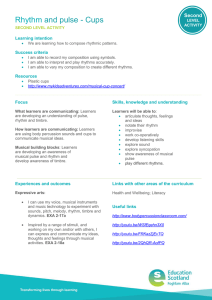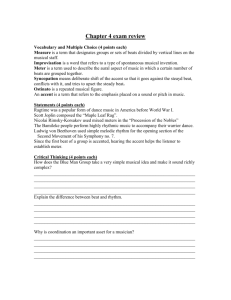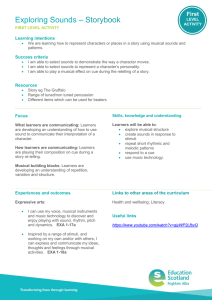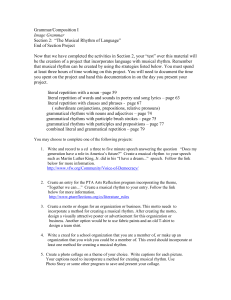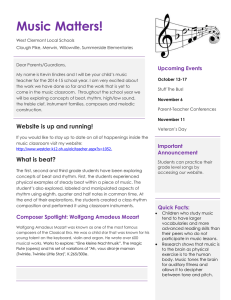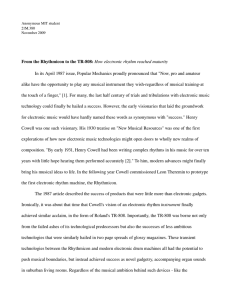Rhythm and pulse – Keep the Beat First
advertisement
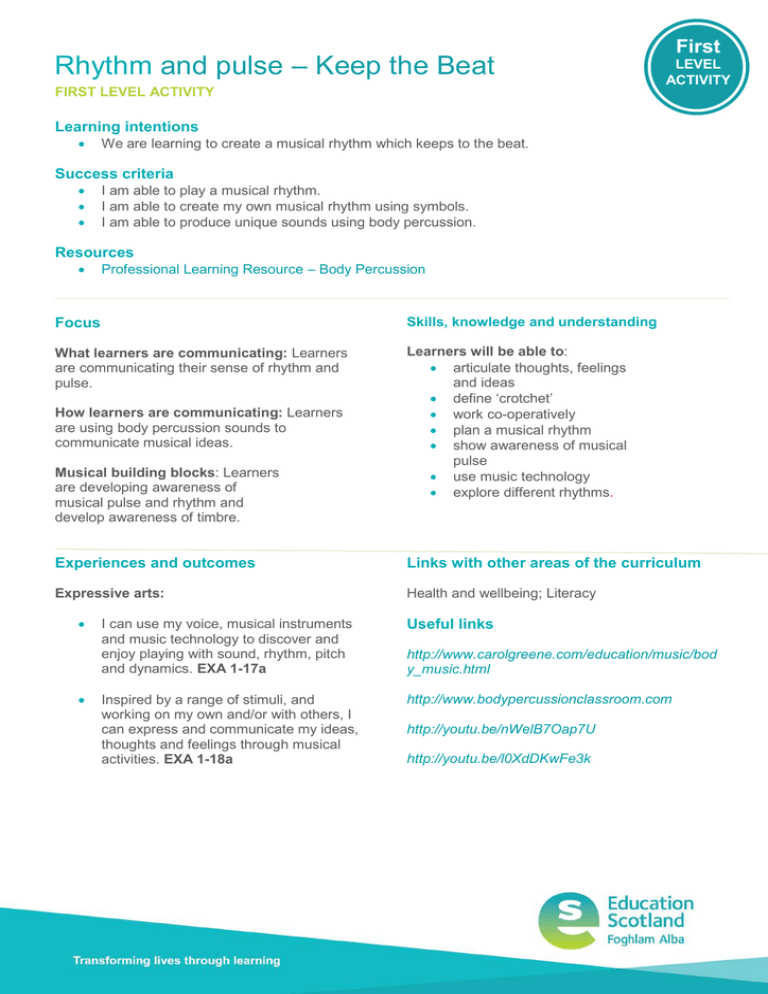
Rhythm and pulse – Keep the Beat FIRST LEVEL ACTIVITY First LEVEL ACTIVITY Learning intentions • We are learning to create a musical rhythm which keeps to the beat. Success criteria • • • I am able to play a musical rhythm. I am able to create my own musical rhythm using symbols. I am able to produce unique sounds using body percussion. Resources • Professional Learning Resource – Body Percussion Focus Skills, knowledge and understanding What learners are communicating: Learners are communicating their sense of rhythm and pulse. Learners will be able to: • articulate thoughts, feelings and ideas • define ‘crotchet’ • work co-operatively • plan a musical rhythm • show awareness of musical pulse • use music technology • explore different rhythms. How learners are communicating: Learners are using body percussion sounds to communicate musical ideas. Musical building blocks: Learners are developing awareness of musical pulse and rhythm and develop awareness of timbre. Experiences and outcomes Links with other areas of the curriculum Expressive arts: Health and wellbeing; Literacy • • I can use my voice, musical instruments and music technology to discover and enjoy playing with sound, rhythm, pitch and dynamics. EXA 1-17a Useful links Inspired by a range of stimuli, and working on my own and/or with others, I can express and communicate my ideas, thoughts and feelings through musical activities. EXA 1-18a http://www.bodypercussionclassroom.com http://www.carolgreene.com/education/music/bod y_music.html http://youtu.be/nWelB7Oap7U http://youtu.be/l0XdDKwFe3k Process/next steps 1) As a class, create short rhythms using the box below and play together. 1 2 3 4 2) Working in groups, the pupils can begin to devise their own rhythm boxes. They should have the freedom to experiment with different body percussion sounds. It is important to reinforce that there should only be one sound in each box. 3) As a class look at the grid to begin building an understanding of pulse and rhythm with the pupils. Each box is worth one beat (a crotchet); S = Stamp; C = Clap; an empty box – pause (do not play); Hsss= make a short hissing sound. As a class, play each line four times until children are more confident. Encourage the children to feel the pulse of the music. The music should not speed up or slow down. 4) Children should continue to develop their own patterns. Encourage children to include at least one pause in one of their sequences. After rehearsing their patterns, the pupils can share them with the rest of the class, or record each other using music technology for peer assessment. 1 2 3 4 S C S C S C C S S C S Hsss X4 X4 X4 C X4 C 5) Once children are confident, they can experiment by adding 2 sounds per box. Each sound would be equal to half a beat (a quaver). 1 2 3 4 S C SS C 1 2 3 4 S CC C
